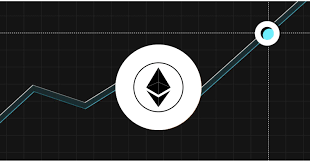Bitget:全球日交易量排名前 4!
BTC 市占率59.90%
目前 ETH 燃料費:0.1-1 gwei
BTC/USDT$104055.01 (+3.51%)恐懼與貪婪指數23(極度恐懼)
山寨季指數:0(比特幣季)
比特幣現貨 ETF 總淨流量:-$566.4M(1 天);-$1.55B(7 天)。Bitget 新用戶立享 6,200 USDT 歡迎禮包!立即領取
到 Bitget App 隨時隨地輕鬆交易!立即下載
Bitget:全球日交易量排名前 4!
BTC 市占率59.90%
目前 ETH 燃料費:0.1-1 gwei
BTC/USDT$104055.01 (+3.51%)恐懼與貪婪指數23(極度恐懼)
山寨季指數:0(比特幣季)
比特幣現貨 ETF 總淨流量:-$566.4M(1 天);-$1.55B(7 天)。Bitget 新用戶立享 6,200 USDT 歡迎禮包!立即領取
到 Bitget App 隨時隨地輕鬆交易!立即下載
Bitget:全球日交易量排名前 4!
BTC 市占率59.90%
目前 ETH 燃料費:0.1-1 gwei
BTC/USDT$104055.01 (+3.51%)恐懼與貪婪指數23(極度恐懼)
山寨季指數:0(比特幣季)
比特幣現貨 ETF 總淨流量:-$566.4M(1 天);-$1.55B(7 天)。Bitget 新用戶立享 6,200 USDT 歡迎禮包!立即領取
到 Bitget App 隨時隨地輕鬆交易!立即下載


RIZE (RIZE) 價格預測
未上架
RIZE 在 2025、2026、2030 年乃至未來可能價值多少?RIZE 在明天、本週或本月的預測價格是多少?如果持有 RIZE 到 2050 年,潛在投資回報率是多少?
本頁面提供 RIZE 的短期和長期價格預測工具,幫助您評估 RIZE 未來的價格表現。您還可以自行設定預測值,以估算 RIZE 的未來價值。
需要注意的是,由於加密貨幣市場本身具有波動性大、複雜度高的特性,儘管價格預測提供了潛在價格區間和走勢場景的參考,但仍應保持審慎態度。
本頁面提供 RIZE 的短期和長期價格預測工具,幫助您評估 RIZE 未來的價格表現。您還可以自行設定預測值,以估算 RIZE 的未來價值。
需要注意的是,由於加密貨幣市場本身具有波動性大、複雜度高的特性,儘管價格預測提供了潛在價格區間和走勢場景的參考,但仍應保持審慎態度。
2025 年及未來 RIZE 價格預測走勢圖
根據預測的每日增長率 +0.014%,預測 RIZE 未來 10 天的價格走勢。
今日价格预测(Nov 5, 2025)
$0.01102
明日價格預測(Nov 6, 2025)
$0.01102
5 天後價格預測(Nov 10, 2025)
$0.01103
本月價格預測(Nov 2025)
$0.01104
下個月價格預測(Dec 2025)
$0.01109
5 個月後價格預測(Apr 2026)
$0.01127
2025 年價格
$0.01129
2026 年價格
$0.01186
2030 年價格
$0.01441
根據短期 RIZE 價格預測,預計 RIZE 價格將在 Nov 5, 2025 達到 $0.01102,Nov 6, 2025 達到 $0.01102,以及 Nov 10, 2025 達到 $0.01103。根據每月 RIZE 價格預測,預計 RIZE 價格將在 Nov 2025 達到 $0.01104,Dec 2025 達到 $0.01109,Apr 2026 達到 $0.01127。根據每年長期 RIZE 價格預測,預計 RIZE 價格將在 2025 年達到 $0.01129,2026 年達到 $0.01186,且 2030 年達到 $0.01441。
今日 RIZE 價格預測
目前 RIZE(RIZE)價格為 $0.01129,24 小時價格漲跌幅為 4.08%。預計 RIZE(RIZE)今日價格將達到 $0.01102。了解更多 今日 RIZE 價格。
RIZE Nov 2025 價格預測
預計 Nov 2025,RIZE(RIZE)價格漲跌幅為 -15.46%,且預計 RIZE(RIZE)價格將於 Nov 2025 底達到 $0.01104。
RIZE 2025 價格預測
預計 2025,RIZE(RIZE)價格漲跌幅為 Infinity%,且預計 RIZE(RIZE)價格將於 2025 年底達到 $0.01129。
長期 RIZE 價格預測:2026、2030、2035、2040、2050
以下為基於固定增長率的 RIZE 價格預測模型。該模型不考慮市場波動、外部經濟因素或突發事件,僅專注於 RIZE 的平均價格趨勢,幫助投資者分析並快速估算 RIZE 投資的潛在收益。
請輸入您預測的 RIZE 年增長率,即可查看 RIZE 未來價值變化情況。
請輸入您預測的 RIZE 年增長率,即可查看 RIZE 未來價值變化情況。
每年 RIZE 價格預測(基於 5% 的預測年增長率)
%
預測年增長率:請輸入一個介於 -100% 到 +1,000% 之間的百分比。
| 年份 | 預測價格 | 總收益率 |
|---|---|---|
2026 | $0.01186 | +5.00% |
2027 | $0.01245 | +10.25% |
2028 | $0.01307 | +15.76% |
2029 | $0.01373 | +21.55% |
2030 | $0.01441 | +27.63% |
2035 | $0.01840 | +62.89% |
2040 | $0.02348 | +107.89% |
2050 | $0.03824 | +238.64% |
基於年增長率為 5% 的情況下,預計 RIZE(RIZE)價格將在 2026 達到 $0.01186,2030 年達到 $0.01441,2040 年達到 $0.02348,2050 年達到 $0.03824。
RIZE 2026 價格預測
在 2026,基於預測年增長率為 5% 的情況下,RIZE(RIZE)價格預計將達到 $0.01186。基於該預測,投資並持有 RIZE 直至 2026 的累計投資回報率將達到 5.00%。
RIZE 2030 價格預測
在 2030,基於預測年增長率為 5% 的情況下,RIZE(RIZE)價格預計將達到 $0.01441。基於該預測,投資並持有 RIZE 直至 2030 的累計投資回報率將達到 27.63%。
RIZE 2035 價格預測
在 2035,基於預測年增長率為 5% 的情況下,RIZE(RIZE)價格預計將達到 $0.01840。基於該預測,投資並持有 RIZE 直至 2035 的累計投資回報率將達到 62.89%。
RIZE 2040 價格預測
在 2040,基於預測年增長率為 5% 的情況下,RIZE(RIZE)價格預計將達到 $0.02348。基於該預測,投資並持有 RIZE 直至 2040 的累計投資回報率將達到 107.89%。
RIZE 2050 價格預測
在 2050,基於預測年增長率為 5% 的情況下,RIZE(RIZE)價格預計將達到 $0.03824。基於該預測,投資並持有 RIZE 直至 2050 的累計投資回報率將達到 238.64%。
您能從 RIZE 中獲得多少收益?
如果您今年投資 $100 於 RIZE,並持有至 2026 年,基於價格預測,您可能獲得 $5 的潛在收益,預估回報率為 5.00%。(該估算未包含手續費)。
免責聲明:本內容不構成投資建議。所提供的資訊僅用於一般參考目的。本頁面所提供的任何資訊、資料、服務或其他內容,均不構成任何形式的招攬、推薦、背書,亦不構成金融、投資或其他方面的建議。在做出任何投資決策前,請務必尋求來自法律、金融及稅務等方面的獨立專業意見。
短期 RIZE 價格預測表
每日 RIZE 價格預測(基於 0.014% 的每日預估漲幅)
RIZE 在明天、5 天後、10 天後及更長時間的預測價格是多少?%
預測每日漲幅:請輸入一個介於 -100% 到 +1,000% 之間的百分比。
| 日期 | 預測價格 | 總收益率 |
|---|---|---|
Nov 6, 2025 (明天) | $0.01102 | +0.01% |
Nov 7, 2025 | $0.01103 | +0.03% |
Nov 8, 2025 | $0.01103 | +0.04% |
Nov 9, 2025 | $0.01103 | +0.06% |
Nov 10, 2025 (5 天後) | $0.01103 | +0.07% |
Nov 11, 2025 | $0.01103 | +0.08% |
Nov 12, 2025 | $0.01103 | +0.10% |
Nov 13, 2025 | $0.01104 | +0.11% |
Nov 14, 2025 | $0.01104 | +0.13% |
Nov 15, 2025 (10 天後) | $0.01104 | +0.14% |
基於 0.014% 的每日漲幅,預計 RIZE(RIZE)價格將在 Nov 6, 2025 達到 $0.01102,Nov 10, 2025 達到 $0.01103,Nov 15, 2025 達到 $0.01104。
RIZE Nov 6, 2025 價格預測
根據 RIZE 的價格預測,其每日漲幅為 0.014%,預計在 Nov 6, 2025(明天),1 枚 RIZE 的價格將達到 $0.01102。若投資並持有 RIZE 至 Nov 6, 2025 為止,預期收益率為 0.01%。
RIZE Nov 10, 2025 價格預測
根據 RIZE 的價格預測,其每日漲幅為 0.014%,預計在 Nov 10, 2025(5 天後),1 枚 RIZE 的價格將達到 $0.01103。若投資並持有 RIZE 至 Nov 10, 2025 為止,預期收益率為 0.07%。
RIZE Nov 15, 2025 價格預測
根據 RIZE 的價格預測,其每日漲幅為 0.014%,預計在 Nov 15, 2025(10 天後),1 枚 RIZE 的價格將達到 $0.01104。若投資並持有 RIZE 至 Nov 15, 2025 為止,預期收益率為 0.14%。
每月 RIZE 價格預測(基於 0.42% 的每月預估漲幅)
RIZE 在下個月、5 個月後、10 個月後及更長期的預測價格是多少?%
預測每月漲幅:請輸入一個介於 -100% 到 +1,000% 之間的百分比。
| 日期 | 預測價格 | 總收益率 |
|---|---|---|
Dec 2025 (次月) | $0.01109 | +0.42% |
Jan 2026 | $0.01113 | +0.84% |
Feb 2026 | $0.01118 | +1.27% |
Mar 2026 | $0.01123 | +1.69% |
Apr 2026 (5 個月後) | $0.01127 | +2.12% |
May 2026 | $0.01132 | +2.55% |
Jun 2026 | $0.01137 | +2.98% |
Jul 2026 | $0.01142 | +3.41% |
Aug 2026 | $0.01146 | +3.84% |
Sep 2026 (10 個月後) | $0.01151 | +4.28% |
根據 0.42% 的每月漲幅,預計 RIZE(RIZE)價格將在 Dec 2025 達到 $0.01109,Apr 2026 達到 $0.01127,Sep 2026 達到 $0.01151。
RIZE Dec 2025 價格預測
根據 0.42% 的每月漲幅,RIZE(RIZE)的預測價格在 Dec 2025(次月)為 $0.01109。若投資並持有 RIZE 至 Dec 2025 底,預期收益率為 0.42%。
RIZE Apr 2026 價格預測
根據 0.42% 的每月漲幅,RIZE(RIZE)的預測價格在 Apr 2026(5 個月後)為 $0.01127。若投資並持有 RIZE 至 Apr 2026 底,預期收益率為 2.12%。
RIZE Sep 2026 價格預測
根據 0.42% 的每月漲幅,RIZE(RIZE)的預測價格在 Sep 2026(10 個月後)為 $0.01151。若投資並持有 RIZE 至 Sep 2026 底,預期收益率為 4.28%。
熱門加密貨幣價格預測文章

Bitcoin Price Prediction: Why It’s Down, Who’s Selling, and When the Recovery Could Start
By mid-2025, Bitcoin had shown remarkable resilience in the face of turbulence that might have crushed a more retail-driven market. Much of this strength could be traced to an unlikely alliance: corporate treasuries and spot Bitcoin ETFs—two institutional powerhouses quietly absorbing new supply and providing a reliable demand base. This partnership allowed Bitcoin to resist the effects of economic tightening and rising rates. Yet, as the year has progressed, that sturdy foundation has started to shift, with profound implications for traders and long-term holders alike.
Source: CoinMarketCap
Why Is the Bitcoin Price Down? What’s Different This Time?
A huge factor in the recent bitcoin price weakness is changing behavior among its biggest backers—corporates and major institutions. Until recently, companies like MicroStrategy (now “Strategy”) seemed to have limitless appetite, building a world-leading Bitcoin treasury of over 674,000 BTC. But in 2025, their buying has cooled off sharply. Just 4,300 BTC were added in the third quarter—by far the slowest pace in a year. This isn’t just a change of heart: the premium for owning shares of BTC-heavy companies has collapsed, going from a flood of leveraged buyers to a trickle. Where investors once paid as much as 208% above Bitcoin’s net asset value, now that premium is just 4%. This shift means less capital for treasury stockpiling, easing the pressure that kept the bitcoin price strong.
Other public companies have run into similar trouble, as seen with Japan’s Metaplanet, which recently saw its share price fall below even the value of its bitcoin holdings. Tactical measures like buybacks and refinancing abound. The recent merger of Strive and Semler Scientific also shows that the “Bitcoin treasury on the balance sheet” movement is entering a slower, more cautious phase, affecting the bitcoin price accordingly.
Are ETFs Still Protecting the Bitcoin Price—or Making It More Volatile?
Bitcoin ETFs exploded in popularity and, for most of 2025, reliably soaked up the supply, offering a powerful safety net for the bitcoin price. For instance, the beginning of October saw crypto ETFs absorb almost $6 billion in just two weeks. But by month’s end, large redemptions flipped the narrative and began pushing the bitcoin price lower. BlackRock’s IBIT, once a powerhouse, suffered the largest single-day outflow of $291 million since summer.
What’s changed? In short, financial conditions got rough, and rate expectations shifted. Institutional investors don’t have the same bullish certainty, leading to dramatic swings—sometimes inflow waves, sometimes outflow surges. ETFs are now a two-way street: they can support the bitcoin price, but they can also amplify corrections, depending on Wall Street’s mood.
What Do On-Chain Data and Whale Moves Tell Us About Bitcoin Price Trends?
On-chain signals are also sending a powerful message about the bitcoin price. Most notably, even long-term holders—typically the “diamond hands” of crypto—have started selling in meaningful volume. More than 327,000 BTC left long-term holders’ wallets in the past month. Historically, this kind of distribution marks periods of stress, as persistent selling can overpower the new demand and pressure the bitcoin price lower.
These on-chain outflows coincided with failed rally attempts in late October and November, a sign that markets lacked conviction. Glassnode data shows that while net flows have slowed, ETF holdings (totaling about $150 billion) still indicate faith in the long-term bitcoin price. Notably, during times of fear, certain whales are betting on a reversal. The famed "Hyperunit" whale who made $200 million on the last crash recently went long again, adding $55 million worth of BTC and ETH, hinting that seasoned players may see an opportunity in the current bitcoin price zone.
How Are Miners and Public Companies Affecting the Bitcoin Price?
The alignment of miner operations with the bitcoin price has rarely been this important. The average miner production cost has soared to around $114,000 per BTC, sometimes overtaking the actual bitcoin price—putting enormous pressure on their finances. This is forcing miners to sell even more aggressively, or branch out into other fields like AI infrastructure and cloud computing.
Corporate bitcoin treasuries are also under stress. Data from SosoValue in October show that, while non-mining public companies bought over 7,200 BTC, the overwhelming bulk of these purchases occurred in the first week. By late month, the buying engine had stalled. Of the largest 38 corporate BTC holders, 24 are now underwater, holding coins bought at higher levels than today’s bitcoin price. Some, like Sequans, have even begun selling back to the market to pay down debt.
Is the Bitcoin Price Still Following Its Famous Cycles, or Just Acting Like Another Risk Asset?
With both ETF and corporate support faltering, the bitcoin price now closely mirrors global risk appetite—rising with stock market rallies and falling during risk-off periods. Analysts note that Bitcoin’s once-sacred four-year halving cycle matters less in 2025, replaced by heightened sensitivity to interest rates, dollar moves, and global liquidity trends. In other words, the bitcoin price increasingly behaves like a high-beta growth stock—rewarded in easy money environments and pressured when liquidity dries up.
Could the Bitcoin Price Rebound? Will “Stealth QE” Save the Crypto Market?
There’s a wild card that could shake things up for the bitcoin price: the US government’s liquidity moves. According to analysts like Arthur Hayes, current policies—while not called “quantitative easing”—are boosting liquidity through backdoor mechanisms like repo operations and aggressive deficit spending. If this trend intensifies, a flood of capital could once again chase bitcoin price highs as risk appetite returns to global markets.
Is This the End of the Bull Market, or the Start of a New Opportunity?
Despite the doom and gloom, there are signs the bottom may be near for the bitcoin price. Most quick-trigger retail sellers have been flushed out by forced liquidations. ETF inflows, while tepid since summer, mean $150 billion-plus in institutional bitcoin price bets are sitting tight. And as the more impulsive sellers leave the field, new buyers—whether sovereign funds, fintech innovators, or a resurgence of retail—eventually step in. Bitwise and QCP Capital analysts remain cautiously optimistic that once macro headwinds relent, new buyers will rescue the bitcoin price and drive a renewed cycle.
What Does This Mean for Solana and Other Altcoins?
The volatility facing the bitcoin price hasn’t spared leading altcoins. Solana (SOL), for instance, has followed bitcoin price swings but with amplified highs and lows. Still, developer activity and usage metrics point to strong fundamentals. If the bitcoin price begins to climb again, assets like Solana could see even sharper risk-on rallies.
Conclusion: Where Is the Bitcoin Price Headed Next?
The story of the bitcoin price in 2025 is a story of evolution. The old foundations—steady ETF inflows and aggressive corporate buying—aren’t as stable as they once were, and volatility is back in force. But as the market matures, new patterns will emerge. For investors and traders, watching ETF flows, on-chain data, and global liquidity trends is now essential for predicting the next bitcoin price rally or correction. History shows that when one source of bitcoin price strength fades, another appears—sometimes explosively so.
For those who remain patient and keep up with these shifting tides, the changes in the bitcoin price may unlock new opportunities just as previous cycles have done, making 2025 a pivotal year for smart, forward-looking crypto investors.
Disclaimer: The opinions expressed in this article are for informational purposes only. This article does not constitute an endorsement of any of the products and services discussed or investment, financial, or trading advice. Qualified professionals should be consulted prior to making financial decisions.
Bitget 學院2025-11-05 11:39

Nintendo Shares Soar After Switch 2 Sales Forecast Upgrade — November 2025
Nintendo just dropped a power-up on Wall Street.
In its latest earnings release, the Japanese gaming giant didn’t just post blockbuster numbers — it delivered a confidence boost that sent investors rushing to hit the “Buy” button. Fueled by the runaway success of its newly launched Switch 2 console, Nintendo revealed that revenue more than doubled and profits soared 85% in the first half of its fiscal year. But the real headline-grabber? The company raised its full-year sales forecast for the Switch 2 by a hefty margin, signaling that demand is running hotter than expected.
Originally projecting 15 million units sold by March 2026, Nintendo now believes it can ship 19 million — a bold move that electrified markets and lifted shares to multi-year highs. With its strongest product cycle in years, an enthusiastic fanbase, and the holiday season ahead, Nintendo is once again commanding the spotlight — and investors are paying close attention.
Nintendo Stock Performance: 2025 Rally Accelerates
Nintendo Co., Ltd. (7974.T) Price in JPY
Source: CoinMarketCap
Nintendo’s stock rallied sharply following its latest earnings and guidance announcement. On the Tokyo Stock Exchange, shares rose over 8% in one day, with the closing price translating to approximately $93.50 — one of the stock’s strongest single-day gains in years. The reaction was driven by optimism around the company’s upgraded sales forecast for the Switch 2 console and better-than-expected financial results.
In U.S. markets, Nintendo’s American Depositary Receipts (NTDOY) mirrored the surge, climbing as much as 10% and closing at around $22.14. These moves added to a strong upward trend: Nintendo’s U.S.-listed shares are now up more than 60% over the past 12 months, significantly outperforming many of its gaming and tech sector peers.
This momentum has pushed Nintendo’s market capitalization above $100 billion, reflecting renewed investor confidence in the company’s growth potential. The combination of strong earnings, rising hardware demand, and an aggressive full-year outlook has helped reposition Nintendo as a key stock to watch heading into 2026.
Nintendo Raises Switch 2 Sales Target After Strong Start
Nintendo has significantly raised its sales forecast for the Switch 2 console, now projecting 19 million units sold by the end of its fiscal year in March 2026. This marks a notable increase from its previous guidance of 15 million units, reflecting stronger-than-expected demand in the first few months since launch.
The company reported that it had already sold 10.3 million units of the Switch 2 by the end of September 2025. This early momentum has outpaced internal expectations and led to an upward revision of both hardware production and shipment targets. Nintendo stated that it is preparing to meet higher global demand heading into the holiday season, traditionally its most profitable period.
A key factor behind the raised forecast is the upcoming release of several high-profile games tied to well-known franchises. Titles like Pokémon Legends: Z-A and Kirby Air Riders are expected to drive additional hardware and software sales. Nintendo also cited stable production capacity and strong performance in key markets such as North America and Europe as reasons for the optimistic outlook.
Nintendo Q2 FY2025 Results: Revenue Doubles, Forecast Raised
Nintendo posted strong financial results for the second quarter of its fiscal year 2025, driven by the successful rollout of the Switch 2. For the six-month period ending September 30, 2025, the company reported total revenue of approximately $7.1 billion, more than double the figure from the same period last year. Net profit surged to $1.3 billion, representing year-over-year growth of around 85%.
In the fiscal second quarter alone (July to September), operating profit came in at $570 million, well above market expectations. These results were fueled by strong hardware sales, a solid pipeline of software titles, and increasing digital downloads.
On the back of this performance, Nintendo raised its full-year operating profit forecast from $2.1 billion to approximately $2.4 billion. The company credited high demand for Switch 2, a healthy release calendar of upcoming titles, and solid global supply chain management as factors supporting the revision. Additionally, it increased its shareholder dividend payout, highlighting its financial strength and commitment to capital returns.
Market Reaction: Nintendo Stock Gains Support After Earnings Beat
Nintendo’s strong second-quarter earnings and increased full-year guidance have earned a positive response from both analysts and investors. Several research firms updated their outlooks following the announcement, pointing to the early success of the Switch 2 and the company’s ability to scale production and meet global demand.
Investor sentiment shifted quickly after the report. Retail interest increased across major trading platforms, and institutional confidence was reflected in strong buying activity. Analysts noted that Nintendo’s willingness to raise its full-year sales and profit forecasts mid-cycle signals operational strength and a solid product roadmap heading into the holiday quarter.
Media coverage echoed this confidence. Headlines focused on the Switch 2’s rapid sales performance — over 10.3 million units sold in just a few months — and highlighted comparisons to Nintendo’s best historical hardware launches. Many observers now see the Switch 2 as the foundation of a potential multi-year growth cycle, with room for upside if momentum continues through the end of the fiscal year.
Nintendo Stock Price Prediction: Can the Rally Continue in 2025?
After a surge that pushed Nintendo’s market value past $100 billion, investors are now considering whether the stock’s momentum can continue through the rest of 2025 and beyond.
As of early November 2025, Nintendo’s American Depositary Receipts (NTDOY) are trading at approximately $22.14, up more than 60% year-over-year. The company’s recent earnings and strong Switch 2 sales outlook have been key drivers behind this rally. Based on current share prices and earnings projections, Nintendo’s forward price-to-earnings (P/E) ratio stands around 40x, which is considered elevated by historical gaming sector standards.
This valuation implies high investor confidence in sustained performance — not just from console sales, but also from recurring revenue streams like digital game downloads and Nintendo Switch Online subscriptions. To maintain its current share price or move higher, Nintendo will likely need to exceed expectations during the holiday quarter, both in hardware shipments and game performance.
Analysts remain generally positive but cautious. If the company executes well during the holiday season and maintains strong software attach rates, the rally could continue into 2026. However, any signs of slowing demand or underwhelming game releases could trigger short-term pullbacks. Overall, the outlook remains favorable, but the bar for continued stock appreciation is now set higher.
Conclusion: What Investors Should Watch Next
Nintendo has delivered an impressive start to its Switch 2 cycle, with revenue doubling, profit soaring, and full-year forecasts raised — all signs of a well-executed product launch. The market has responded accordingly, pushing the company’s stock to multi-year highs and lifting its valuation past $100 billion. With a healthy game pipeline and expanding digital services, Nintendo is once again positioned as a major growth player in the global gaming industry.
Looking ahead, the key focus will be on the holiday quarter. Strong hardware shipments, successful game launches, and sustained consumer demand will be critical to maintaining the stock’s current momentum. Investors should closely watch December sales figures and Nintendo’s next earnings update to gauge whether the company can meet rising expectations. If it does, Nintendo could remain a top-performing stock well into 2026 — but execution will be everything from here.
Disclaimer: The opinions expressed in this article are for informational purposes only. This article does not constitute an endorsement of any of the products and services discussed or investment, financial, or trading advice. Qualified professionals should be consulted prior to making financial decisions.
Bitget 學院2025-11-05 10:55

Ethereum Price Prediction for November 2025 — Will ETH Hit $4,000 Again or Drop Below $3,000
Ethereum (ETH) , the world’s second-largest cryptocurrency by market capitalization, enters November 2025 amid heightened market tension and renewed volatility. Following a steady summer rally that pushed ETH toward $4,900 in August, sentiment has soured over the past few weeks, culminating in a sharp 6–7% drop at the start of the month. ETH is currently trading near the $3,600 mark, down roughly 25% from recent highs, as traders digest a mix of macroeconomic pressures, technical signals, and unfolding news across the crypto space. The question now looming large: will Ethereum manage to reclaim the $4,000 threshold this month, or is a deeper pullback toward $3,000 in the cards?
The Macro and Regulatory Landscape: Tailwinds or Trouble for ETH?
Ethereum’s price action in November 2025 is being shaped as much by global economic signals as by crypto-specific developments. Following a modest U.S. Federal Reserve rate cut in late October—the first in over a year—investors initially saw a window of relief. However, that optimism faded quickly when Fed Chair Jerome Powell emphasized that further rate cuts were “not a foregone conclusion,” warning that elevated interest rates were beginning to slow the U.S. economy. These comments triggered a wave of caution across financial markets, prompting a risk-off shift that hit equities and crypto alike. As liquidity tightened and uncertainty returned, ETH—like most digital assets—faced renewed selling pressure.
Meanwhile, Ethereum’s regulatory standing and institutional adoption are evolving more positively. With U.S. regulators allowing Ethereum-based ETFs to flourish, and major players like BlackRock and BitMine significantly increasing their exposure, ETH is finding firmer ground within traditional finance. As of Q3 2025, Ethereum-linked ETFs reportedly held over $300 billion in reserves, marking a substantial validation of ETH as an investable asset. Globally, regions in Europe and Asia are pushing forward with crypto-friendly policies that support staking and DeFi, boosting Ethereum’s role in the broader fintech landscape. Unlike Bitcoin, Ethereum’s energy-efficient proof-of-stake model aligns better with ESG standards, adding further appeal for institutions. While macroeconomic headwinds still loom, Ethereum’s growing legitimacy in the regulatory and financial sectors may provide it with the structural support it needs to weather market turbulence.
Technical Analysis: Can Ethereum Hold the Line or Break Lower?
From a technical standpoint, Ethereum's price structure entering November reveals a fragile but not yet broken setup. The recent 6–7% drop pushed ETH down to the mid-$3,500s, where it found short-term support just above $3,500. This level now acts as a critical floor. A decisive break below it could open the door to a test of $3,300—or even the psychologically important $3,000 mark. On the upside, ETH faces strong resistance around $3,800–$3,900, which was previously a key support zone before flipping bearish during October’s sell-off. A recovery above $4,000 would be needed to invalidate the current bearish structure and signal a potential shift back into an uptrend.
Momentum and trend indicators suggest Ethereum is at a crossroads. The 50-day moving average has begun crossing below the 200-day moving average—a formation known as a “death cross,” often interpreted as a bearish signal. At the same time, the Relative Strength Index (RSI) has slipped into oversold territory, indicating that recent selling may be overextended in the short term. This combination creates a tension between momentum exhaustion and longer-term downtrend risk. For now, Ethereum appears to be consolidating in a range between roughly $3,550 and $3,850. A breakout in either direction will likely define the next leg of its trajectory.
Recent Market Developments: Whales Buy Big as DeFi Shocks Shake Sentiment
November opened with a dramatic mix of bullish accumulation and bearish shocks for Ethereum. On the positive side, major institutional players and whales have continued to scoop up ETH during the dip. BitMine Immersion Technologies, chaired by Fundstrat’s Tom Lee, made headlines by acquiring 82,353 ETH—worth roughly $300 million. This purchase brought BitMine’s total Ethereum holdings to over 3.39 million ETH, representing 2.8% of the circulating supply. The firm has publicly stated its goal to acquire 5% of all ETH, framing its long-term conviction in Ethereum’s ecosystem and network value. Other large wallets followed suit: addresses holding between 1,000 and 100,000 ETH collectively added over 1.6 million ETH during October, signaling institutional confidence even as prices declined.
Yet, that buying spree has been overshadowed in the short term by a series of market-rattling events. On November 3, the Ethereum-based Balancer protocol was exploited for over $110 million, with an additional $93 million reportedly lost from a separate issue at Stream Finance on the same day. The back-to-back security incidents raised renewed concerns about DeFi vulnerabilities and dampened short-term sentiment. These events occurred alongside broader macro fears, creating a perfect storm of selling pressure. Over $1.1 billion in crypto long positions were liquidated within 24 hours—about $85 million of that tied to Ethereum—as traders exited leveraged positions en masse. Even BitMine’s bullish ETH announcement wasn’t enough to reverse the trend that day, with both ETH and BitMine’s stock price sliding further. The message was clear: while large holders are accumulating for the long haul, short-term traders remain deeply reactive to risk events.
Expert Forecasts and Analyst Commentary: Long-Term Confidence, Short-Term Uncertainty
Despite Ethereum’s shaky start to November, many analysts maintain confidence in its long-term trajectory, though they remain cautious about the immediate future. Some experts highlight Ethereum’s growing network utility—ranging from stablecoin transaction volumes to decentralized application usage and staking participation—as a foundation for future price growth. They argue that Ethereum’s evolving role in financial infrastructure supports a strong fundamental case, even if price volatility persists in the short term.
Price forecasts vary, but several analysts suggest Ethereum could retest the $4,600–$5,500 range by the end of 2025 if macroeconomic conditions improve and adoption trends continue. Others point to positive signals like the expansion of Layer 2 ecosystems, healthy staking dynamics, and continued accumulation by large holders as signs that the network’s value proposition remains solid. Still, most agree that as long as ETH trades below key resistance at $3,900–$4,000, the short-term outlook remains uncertain. Traders are watching closely for a decisive move in either direction, while long-term investors appear to be focusing on fundamentals rather than short-term headlines.
Ethereum Price Prediction November 2025: Can ETH Reach $4,000 or Slip Below $3,000?
Ethereum (ETH) Price
Source: CoinMarketCap
With Ethereum trading around $3,600, its price remains stuck in a narrow but crucial range. Bulls are watching for a clean break above the $3,800–$3,900 resistance zone, which could open the path to reclaim $4,000. If macroeconomic conditions turn more favorable—such as signs of easing monetary policy or improving risk sentiment—ETH could attract renewed buying interest. Institutional accumulation and on-chain metrics continue to paint a constructive backdrop, but momentum has yet to fully shift back in favor of buyers.
On the downside, the $3,500 support level is under close scrutiny. A break below it could trigger further technical selling, pushing Ethereum toward $3,300 or even the psychological $3,000 level. Recent DeFi exploits and liquidation cascades have left the market cautious, and without a positive shift in sentiment, downside risks remain elevated. While long-term holders appear to be accumulating, short-term traders are still reacting defensively to negative headlines.
As it stands, Ethereum seems locked in a consolidation phase, trading between roughly $3,500 and $3,900. A decisive move beyond this range—driven by macro triggers or technical momentum—will likely define the rest of the month. Until then, ETH’s price outlook remains delicately balanced between recovery and further correction, with $4,000 and $3,000 as the key levels to watch.
Conclusion
Ethereum's performance in November 2025 reflects a market in transition—caught between promising long-term fundamentals and short-term headwinds. Institutional interest, strong network activity, and growing regulatory clarity offer a bullish foundation, but macroeconomic uncertainty and recent volatility continue to cloud the near-term picture.
Whether ETH pushes back toward $4,000 or risks slipping below $3,000 will depend on how these opposing forces play out over the coming weeks. For investors, patience and a close eye on key support and resistance levels may prove critical, as Ethereum navigates one of its most pivotal months this year.
Disclaimer: The opinions expressed in this article are for informational purposes only. This article does not constitute an endorsement of any of the products and services discussed or investment, financial, or trading advice. Qualified professionals should be consulted prior to making financial decisions.
Bitget 學院2025-11-04 17:03

Solana Price Prediction—Can Solana ETF Inflows and Whale Bets Power a 2025 Comeback?
Over the past 24 hours, the cryptocurrency market has seen a marked decline, with blue-chip assets posting significant losses. Solana (SOL), in particular, has emerged as one of the biggest decliners, shedding about 6% and trading near the $175 mark. This comes as a surprise to some, especially considering the positive ecosystem developments and strengthening institutional interest, including new Solana spot ETFs.
In this article, we provide a detailed assessment of the factors driving Solana’s decline, recent updates in the Solana ecosystem, activity from on-chain whales, the potential boost from partnerships like that with Western Union, and a comprehensive price forecast.
Source: CoinMarketCap
Why Is the Crypto Market Going Down?
The current decline in Solana price is part of a broader correction across the cryptocurrency sector. Several macroeconomic and crypto-specific factors are at play:
Outflows Across Major Assets: Bitcoin and Ethereum have seen net outflows from exchange-traded products (ETPs), as have altcoins, intensifying sell pressure across the board. Bitcoin, for example, notched some of its largest ETF outflows in weeks, and Ethereum faced additional pressure as spot ETFs debuted to diminished enthusiasm.
Crypto-Specific Headwinds: Security incidents—including DeFi exploits and scams on various blockchains—as well as concerns around large token unlock events, have added to negative sentiment.
These combined elements have affected Solana price, with many investors fearful of further downside, even as new financial products like the Solana ETF gain traction.
Solana Price Performance and Market Triggers
Solana price has dropped approximately 6% within the most recent trading session, dipping toward the key $175 support zone. Network-related activity has also shown a short-term slowdown; for example, Solana’s DEX volume has declined notably, and there has been concern over upcoming token unlocks worth over $1.7 billion. Additionally, the Solana ecosystem was recently hit by a high-profile $107 million rug pull incident associated with the Libra project. This has amplified caution among retail investors and contributed to short-term volatility in Solana price.
Despite these setbacks, Solana’s network strength remains evident in a broader context, especially as new initiatives and institutional movements unfold.
Solana ETF Launch: A Vote of Confidence from Wall Street
A defining moment for Solana price and perception has been the substantial inflows into Solana ETF products. Wall Street signaled strong market confidence with the launch of the Bitwise Solana Staking ETF (BSOL), which saw more than $417 million in inflows—outperforming even established Bitcoin and Ethereum ETFs in its debut week, according to Bloomberg ETF analyst Eric Balchunas. Similarly, the newly-launched Grayscale Solana Trust (GSOL) attracted over $1 million on its first day.
These developments in the Solana ETF market underscore rising institutional conviction in Solana’s long-term potential. Increased institutional exposure via Solana ETF not only boosts Solana price sentiment but also reinforces Solana’s profile among large-scale investors.
On-Chain Activity: Whale Movements During the Dip
Amidst the recent pullback in Solana price, noteworthy on-chain data shows continued whale confidence. According to Lookonchain, a prominent Solana whale placed a $26 million long position at the height of the decline, employing significant leverage. This bold move suggests that major market participants still see opportunity in Solana price at these levels, with anticipation of a future rebound.
Furthermore, there have been large SOL transfers between notable crypto trading firms, pointing to strategic positioning and continued activity from key stakeholders in the Solana network.
Western Union Partnership and Ecosystem Growth
What’s the latest? Western Union, a global leader in remittance services, has confirmed plans to explore blockchain-powered cross-border transfers. Solana is reportedly one of the blockchains under consideration. While details are emerging, this strategic move points toward the potential adoption of Solana’s network for real-world financial services. Should the partnership materialize, it would likely result in higher network transaction volumes, increased total value locked (TVL), and further expansion of the user base.
Solana’s overall ecosystem continues to demonstrate strength:
The total value locked (TVL) on Solana recently surpassed $10 billion.
The network’s stablecoin market cap approaches $14.5 billion.
Importantly, Solana has maintained a year-long streak without major outages, enhancing its reputation for reliability among users and developers.
Continued ecosystem growth and high-profile partnerships could drive long-term price appreciation and differentiate Solana from other layer-1 blockchains.
Solana Price Prediction: What’s Next?
From a technical perspective, Solana price is at a critical crossroads. The $175 support zone forms the neckline of a head-and-shoulders pattern. If this level is lost, Solana price could see further declines, with support at $156 and then $130. However, if Solana price holds above this range and reverses, a move back toward the $209 resistance is likely. Flipping $300 into support could trigger a more significant breakout, potentially revisiting the $500 mark and, under continued Solana ETF inflows, even higher long-term targets.
Source: Cryptonews.com
Bearish momentum is highlighted by technical indicators: the MACD shows a bearish crossover, while the RSI nears historical oversold levels. However, previous cycles have seen sharp recoveries after similar setups, especially with renewed buying interest from whales and institutions via Solana ETF products.
Conclusion
In summary, Solana price has faced pronounced volatility amidst broader market headwinds and ecosystem-specific events. Even so, surging interest in Solana ETF products, bold whale activity, ecosystem resilience, and the prospective Western Union partnership signal robust long-term potential for the Solana network. As institutional involvement deepens and strategic collaborations advance, Solana price could be poised for a significant rebound once market sentiment stabilizes. Investors tracking Solana price and Solana ETF should continue to monitor both technical levels and ecosystem news for the next decisive move.
Disclaimer: The opinions expressed in this article are for informational purposes only. This article does not constitute an endorsement of any of the products and services discussed or investment, financial, or trading advice. Qualified professionals should be consulted prior to making financial decisions.
Bitget 學院2025-11-04 10:59

Can IREN Stock Price Hit New Highs? AI Cloud Surge Explained
What happens when one of the world’s major Bitcoin miners pivots away from its original sector and places a bold bet on the future of artificial intelligence? That’s the reality for Iris Energy Ltd. (NASDAQ: IREN), an Australia-based company known for its substantial operations in green Bitcoin mining. Founded in 2018, IREN has spent recent years rapidly rebranding itself as a next-generation operator in data centers tailored for AI and high-performance computing (HPC), leveraging vertical integration and renewable-energy-driven infrastructure.
Investors are taking notice. With shares having surged over 500% in 2025 and analyst targets climbing as high as $82, IREN’s trajectory epitomizes the growing convergence of crypto-mining assets and AI infrastructure demand. This article offers an in-depth look at IREN’s strategic transformation, an analysis of its share performance following major business decisions like its Microsoft partnership, its current business model, Wall Street’s forecasts, and the broader context of the booming AI cloud sector.
Source: Google Finance
The Deal with Microsoft
A landmark moment for IREN—and one that immediately rippled across markets—arrived when Microsoft signed a $9.7 billion, five-year agreement with Iris Energy. This deal gives Microsoft priority access to advanced Nvidia AI chips housed at IREN’s major data centers, most notably at Sweetwater, Texas, and through a $5.8 billion hardware partnership with Dell.
The agreement’s direct impact was immediate and dramatic: IREN stock jumped as much as 24.7% to a record high during pre-market, and trading volume soared. The deal forms part of Microsoft’s broader AI infrastructure push—which has also included multi-billion-dollar contracts with other data center companies such as Lambda and Nebius. For IREN, being chosen by Microsoft is a clear validation of its pivot from Bitcoin mining to high-value, AI-centric cloud hosting.
IREN Stock Price Performance After Strategic Moves
IREN’s share price has closely tracked its strategic evolution, marking volatility and sharp rallies in response to each major decision:
Microsoft Partnership: After the deal, IREN’s share price surged by more than 20% in pre-market action, settling near $73, up from $17 just a few months prior. This rally marked a staggering 530% gain over six months, with the company’s market cap exceeding $16.5 billion.
AI Expansion Announcements: When announcing its $674 million GPU procurement—expanding its AI cloud to roughly 23,000 GPUs from Nvidia and AMD—Iren’s stock leapt 16.6% in one day, with annualized run-rate revenue from this segment guided above $500 million.
Analyst Upgrades: Analyst enthusiasm has also driven price jumps. Bernstein tripled its price target to $75, while Arete Research set theirs at $78, both crediting IREN’s unique vertical integration and liquidity to rapidly scale AI cloud infrastructure.
Mixed Wall Street Views: Not all reactions have been bullish. On news of rapid gains and capex commitments, JPMorgan downgraded IREN to “Underweight” with a $24 target, arguing the stock was pricing in an extremely optimistic infrastructure buildout that could expose IREN to execution risk and massive capital outlays.
The stock’s rapid ascent underscores both Wall Street’s conviction in its new business model and the sector’s inherent volatility.
IREN’s Business: From Bitcoin Mining to AI Cloud
IREN built its reputation as a sustainability-focused Bitcoin miner, controlling its own land, renewable power contracts, and self-built data centers—a vertically integrated model rare in the sector. In FY2025, this structure helped the company deliver $501 million in revenue (up 168% YoY) and $86.9 million in net income, despite the sector-wide pressures caused by crypto market fluctuations and Bitcoin’s halving cycles.
The real paradigm shift, however, is IREN’s aggressive entry into AI hosting:
The company doubled down on GPUs, completing procurement of over 23,000 chips and developing a 75MW liquid-cooled hyperscale data center in Texas aimed directly at serving AI and high-performance computing loads.
Revenue projections for AI cloud have now reached $500 million annualized, targeted for late 2025 or early 2026.
With ownership of land, power, and digital infrastructure, IREN can “toggle” its resources between crypto and AI, maximizing per-megawatt economic yield. AI hosting brings in $10 million+ per MW, compared to $2 million for traditional colocation.
The company’s focus on renewable energy aligns with trends in ESG investing and regulatory scrutiny, raising its appeal for AI clients under Europe’s Corporate Sustainability Reporting Directive.
The transition addresses two key industry risks: the downturns in cryptocurrency pricing and the halving of mining rewards, while capitalizing on the global race for GPU-based computational power.
IREN Stock Price Prediction by Wall Street
Opinions among analysts are divided but generally optimistic:
Bullish Targets: Bernstein raised its target to $75, forecasting exponential revenue growth from scaled AI cloud deployment. Arete Research initiated at $78. Roth Capital/MKM put the figure as high as $82 by projecting $2.7 billion in revenue and $1.2 billion EBITDA by FY2028.
Moderate/Neutral: Compass Point took a midline with a $50 target, citing strong economics but also elevated capex requirements.
Bearish Skepticism: JPMorgan notably downgraded IREN, warning that growth targets may be overheated and the stock already prices in a >1GW build—an investment that could run up to $10 billion in capital costs. Questions remain about the company achieving its own AI revenue guidance, given modest recent contributions ($2.7 million in Q2 FY25 from AI cloud).
The consensus, per MarketBeat, stands at a moderate “Buy” with a 12-month average target of $47.73, but there are significant outliers predicated on execution risk and sector volatility.
Why Is the AI Cloud Stock Sector Surging?
Several converging trends explain why companies like IREN—and stocks in the broader AI cloud sector—are soaring:
Booming AI Demand: AI workloads, generative models (such as ChatGPT), and advanced LLMs require exponentially more GPU-accelerated infrastructure than legacy workloads. Major tech firms often face compute shortages, limiting their ability to ramp AI services for customers and themselves.
Big Tech Spending Boom: Microsoft, Amazon, and Google are pouring tens of billions into data center expansion and “neocloud” partnerships. Notably, Microsoft inked a combined $33 billion in new partnerships for AI capacity, including $19.4 billion with Nebius (100,000 NVidia GB300 GPUs) and a multi-billion-dollar arrangement with IREN.
Capital Market Fervor: Analysts and institutional investors recognize that data center real estate, now tailored for AI, is potentially far more valuable than traditional colocation or even Bitcoin mining. Ownership of land, power, and next-generation GPUs is now considered a prime asset.
Flexible Infrastructure: IREN and peers can direct resources between mining and AI based on current economics—a strategic flexibility not available to less vertically integrated competitors.
Conclusion
IREN’s strategic pivot—from renewable-powered Bitcoin mining to vertically integrated AI data centers—crystallizes the changing landscape of digital infrastructure. Its historic Microsoft deal cements its role as a cornerstone supplier of next-gen AI computing power. The share price has responded accordingly, soaring to historic highs alongside growing analyst enthusiasm.
Yet, investors should note the risks: execution challenges, intense capital requirements, supply chain uncertainty for leading-edge GPUs, and fierce competition from established industry giants.
In sum, IREN is now at the heart of two revolutions—crypto mining and AI cloud infrastructure. If IREN continues to deliver on its bold promises, today’s aggressive price targets may yet prove conservative.
Disclaimer: The opinions expressed in this article are for informational purposes only. This article does not constitute an endorsement of any of the products and services discussed or investment, financial, or trading advice. Qualified professionals should be consulted prior to making financial decisions.
Bitget 學院2025-11-04 10:50

Palantir Stock Price Falls Today — Has Wall Street Moved On From AI?
Palantir Technologies (NYSE: PLTR) saw its stock fall today, slipping over 4% in after-hours trading on November 4, 2025, despite a strong regular-session close near $207. The drop came shortly after the company reported impressive third-quarter earnings that beat Wall Street expectations on both revenue and profit. While PLTR has enjoyed a staggering year-to-date rally — gaining more than 170% — today’s sell-off suggests investor enthusiasm may be cooling, even in the face of stellar financial performance.
The unexpected pullback has some market watchers asking a larger question: is this the first sign that Wall Street’s infatuation with artificial intelligence is fading? Or is the stock simply facing a short-term reset after a euphoric run? With AI-driven companies like Palantir becoming poster children of 2025’s tech boom, any shift in sentiment could carry broader implications for the sector.
Palantir Crushes Q3 Expectations — AI Demand Still Soars
Palantir Q3 Revenue Growth
Palantir’s third-quarter 2025 earnings blew past expectations, underscoring its continued dominance in the fast-evolving AI software market. The company reported revenue of $1.18 billion, up 63% year-over-year and well above Wall Street’s consensus estimate of around $1.09 billion. Adjusted earnings per share hit $0.21, beating forecasts of $0.17, while operating margins climbed to an impressive 51% — a record high for the company. CEO Alex Karp described the quarter’s results as “otherworldly,” crediting surging adoption of Palantir’s Artificial Intelligence Platform (AIP) across industries.
The standout performer was Palantir’s U.S. commercial segment, which surged 121% year-over-year to $397 million as corporations embraced AI to streamline operations and gain data-driven insights. Meanwhile, government contracts — a long-standing strength — grew over 50% to $486 million. Bolstered by these results, management raised its full-year revenue forecast to between $4.396 billion and $4.40 billion, up from about $4.15 billion previously. The company also guided for fourth-quarter revenue of $1.327 billion–$1.331 billion, once again topping analyst estimates.
Market Reaction: From Rally to Reality
Palantir Technologies Inc. (PLTR) Price
Source: Yahoo Finance
Despite the blockbuster earnings report, Palantir’s stock fell more than 4% in after-hours trading on November 4, slipping to around $198 after touching a session high of over $210 earlier in the day. The sell-off came as a surprise to many, given the company’s strong growth metrics and raised guidance. Yet, this type of market reaction isn’t unusual for high-flying AI stocks that have already priced in perfection. After a year of exceptional gains — Palantir’s shares are still up over 170% year-to-date — even positive earnings can spark short-term profit-taking.
Analysts point to a few key factors behind the pullback. First, investors appear increasingly concerned about AI sector valuations, which have soared to historically high multiples. Palantir’s forward price-to-sales ratio remains near 22x, far above the software industry average. Second, some traders noted that Palantir’s heavy reliance on U.S. government contracts could make future growth less predictable if spending priorities shift. Finally, with bond yields staying elevated and risk appetite moderating, even the strongest AI narratives are facing renewed scrutiny from Wall Street.
AI Euphoria or Valuation Hangover?
Palantir’s post-earnings dip may be less about company performance and more about where the market stands in the AI investment cycle. Over the past 18 months, artificial intelligence has dominated investor narratives, fueling massive gains across companies like Nvidia, Super Micro Computer, and Palantir itself. But after such a steep rally, many on Wall Street are beginning to question whether AI enthusiasm has run too far, too fast.
Even as AI continues to transform business operations, investors are growing cautious about paying premium prices for future potential. Analysts from JPMorgan and Morgan Stanley recently noted that AI-related stocks may be entering a “valuation digestion phase,” where growth expectations remain high, but multiples need to cool down. Palantir, trading at valuations more than double that of most software peers, fits neatly into that picture. The question now isn’t whether AI is transformative — that’s already clear — but whether the financial upside is already fully reflected in today’s prices.
Palantir Stock Price Prediction: Can Momentum Return?
Looking ahead, most analysts remain cautiously optimistic about Palantir’s long-term prospects, though near-term volatility seems likely. The company’s fundamentals — consistent profitability, expanding margins, and accelerating AI adoption — remain intact. However, after a year of exceptional gains, investors may demand clearer evidence of sustainable commercial growth before pushing the stock higher again.
According to the latest analyst consensus compiled by Refinitiv, Palantir’s 12-month price target averages around $225, implying modest upside from current levels near $198. Bullish forecasts from firms like Wedbush see shares reaching as high as $260, citing the company’s unique position in applied AI and defense contracts. On the other hand, more cautious voices — including analysts at Citi — warn of a potential retracement toward $170–$180, especially if broader tech sentiment cools or if AI spending slows in 2026.
In short, Palantir’s outlook remains solid, but expectations are high. If the company can continue expanding its commercial footprint and show tangible ROI from its AI platforms, momentum could return quickly. Otherwise, the stock may trade sideways as investors wait for the next major growth catalyst.
Conclusion
Palantir’s latest earnings once again proved that its business momentum is real and that demand for AI solutions remains strong across both government and enterprise clients. Yet, the stock’s decline after such an impressive quarter shows just how much expectations have risen — and how sensitive investors have become to valuation risks in the AI sector.
Rather than signaling the end of Wall Street’s AI fascination, today’s pullback likely reflects a healthy pause in a market that has priced in perfection. Palantir remains one of the most strategically positioned companies in the AI ecosystem, with a track record of consistent execution and profitability. For long-term investors, short-term volatility may offer opportunity rather than alarm. Still, as the AI boom matures, the story may shift from hype-driven excitement to performance-driven scrutiny — and Palantir will need to keep proving that it can deliver.
Disclaimer: The opinions expressed in this article are for informational purposes only. This article does not constitute an endorsement of any of the products and services discussed or investment, financial, or trading advice. Qualified professionals should be consulted prior to making financial decisions.
Bitget 學院2025-11-04 08:39
在 Bitget 購買 RIZE 僅需三步驟

免費建立 Bitget 帳戶
使用您的電子郵件地址/手機號碼在 Bitget 註冊,並建立一個高強度密碼以確保您的帳戶安全。

認證您的帳戶
輸入您的個人資訊並上傳有效的身分照片進行身分認證

購買 RIZE (RIZE)
用多種支付方式在 Bitget 上購買 RIZE。我們將為您展示具體步驟。
購買更多加密貨幣
如何購買
Bitcoin (BTC)

如何購買
Ethereum (ETH)

如何購買
Ripple (XRP)

如何購買
Tron (TRX)

如何購買
Dogecoin (DOGE)

如何購買
Tezo (XTZ)

如何購買
Bitget Token (BGB)

如何購買
Polygon (POL)

如何購買
Solana (SOL)

如何購買
Terra Classic (LUNC)

如何購買
Fantom (FTM)

如何購買
Bitcoin Cash (BCH)

如何購買
Ethereum Classic (ETC)

如何購買
Litecoin (LTC)

如何購買
Binance (BNB)

如何購買
Avalanche (AVAX)

如何購買
Internet Computer (ICP)

如何購買
Tether (USDT)

如何購買
USDC (USDC)

如何購買
Uniswap (UNI)

查看更多
熱門幣種價格預測
 OFFICIAL TRUMP 價格預測
OFFICIAL TRUMP 價格預測 Ethereum 價格預測
Ethereum 價格預測 Worldcoin 價格預測
Worldcoin 價格預測 dogwifhat 價格預測
dogwifhat 價格預測 Kaspa 價格預測
Kaspa 價格預測 Smooth Love Potion 價格預測
Smooth Love Potion 價格預測 Terra 價格預測
Terra 價格預測 Shiba Inu 價格預測
Shiba Inu 價格預測 Dogecoin 價格預測
Dogecoin 價格預測 Pepe 價格預測
Pepe 價格預測 Cardano 價格預測
Cardano 價格預測 Bonk 價格預測
Bonk 價格預測 Toncoin 價格預測
Toncoin 價格預測 Pi 價格預測
Pi 價格預測 Fartcoin 價格預測
Fartcoin 價格預測 Bitcoin 價格預測
Bitcoin 價格預測 Litecoin 價格預測
Litecoin 價格預測 WINkLink 價格預測
WINkLink 價格預測 Solana 價格預測
Solana 價格預測 Stellar 價格預測
Stellar 價格預測您可以在哪裡購買RIZE(RIZE)?
有鑑於加密貨幣市場本身的高波動性和複雜性,準確預測其未來價格幾乎是不可能的。然而,基於市場的週期性特徵、歷史價格走勢、長期發展前景,以及更廣泛應用的潛力,我們仍然可以對未來的價格變動做出一些大致預測。同時需要注意的是,儘管這些預測可以為潛在的價格區間和走勢場景提供一定參考,但仍應以謹慎和懷疑的態度看待。實際價格走勢很可能與這些預測有較大偏差,因此這些預測僅可作為對市場投資潛力的粗略估算。
本內容僅為參考之用,不構成邀約或邀請,也不構成 Bitget 對購買、出售或持有本內容中提及的任何證券、金融產品或工具的建議,也不構成投資建議、財務建議、交易建議或任何其他類型的建議。所提出的資料數據可能反映了在 Bitget 交易所以及其他加密貨幣交易所和市場數據平台上交易的資產價格。Bitget 可能會對加密貨幣交易收取處理費用,這些費用可能不會反映在所顯示的兌換價格中。Bitget 對內容中的任何錯誤或延誤,或對依賴任何內容而採取的任何行動不承擔責任。
本內容僅為參考之用,不構成邀約或邀請,也不構成 Bitget 對購買、出售或持有本內容中提及的任何證券、金融產品或工具的建議,也不構成投資建議、財務建議、交易建議或任何其他類型的建議。所提出的資料數據可能反映了在 Bitget 交易所以及其他加密貨幣交易所和市場數據平台上交易的資產價格。Bitget 可能會對加密貨幣交易收取處理費用,這些費用可能不會反映在所顯示的兌換價格中。Bitget 對內容中的任何錯誤或延誤,或對依賴任何內容而採取的任何行動不承擔責任。

